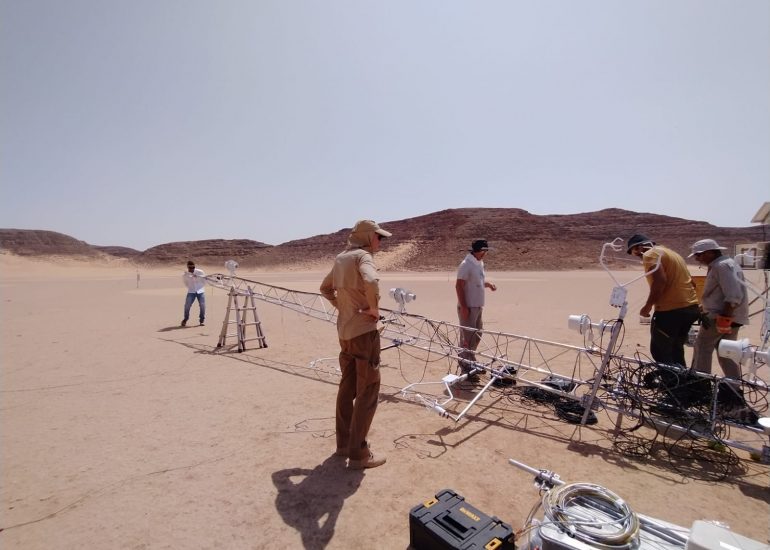Wadi Rum Desert Campaign
campaigns
Wadi Rum Desert Campaign
J-WADI (Jordan Wind erosion And Dust Investigation) is co-organized between the Barcelona Supercomputing Center (BSC) and the KIT’s Institute of Meteorology and Climate Research, in collaboration with the University of Jordan. This particular campaign brings prime mineral dust experts together from multiple institutions across Europe, Jordan, and the USA.
Our Main Objective
The goal of J-WADI is to improve our fundamental understanding of the emission of desert dust, in particular its full-range size distribution and mineralogical composition. Desert dust aerosols are a key component of the Earth system.
Created by wind erosion of arid and semi-arid surfaces, dust is the largest contributor to the global aerosol mass load and dominates climate effects over large areas of the Earth. Mineral dust from North Africa and the Middle East is frequently transported to Europe, especially in spring. Dust aerosols are a mixture of different minerals. Their relative abundances, particle size distribution, shape, surface topography and mixing state influence their effect upon climate.
EMIT
(earth surface mineral dust source investigation)
J-WADI is also linked to EMIT, a NASA instrument mission that is sampling the Earth’s surface mineral composition using hyperspectral imaging spectroscopy on the International Space Station (ISS) since August 2022.
NASA's EMIT Readies for Launch
Designed to analyze airborne dust to see how it might affect climate, the EMIT mission launches to the International Space Station on Thursday, July 14.
5 Things to Know about EMIT
The Earth Surface Mineral Dust Source Investigation will analyze dust carried through the atmosphere from dry regions to see what effects it has on the planet.
NASA's Mapping Dust Storms from Space
The first-of-its-kind, space-borne imaging spectrometer is helping to map dust colors. Scientists can use the data in their climate models to work out how different minerals heat or cool the planet.









